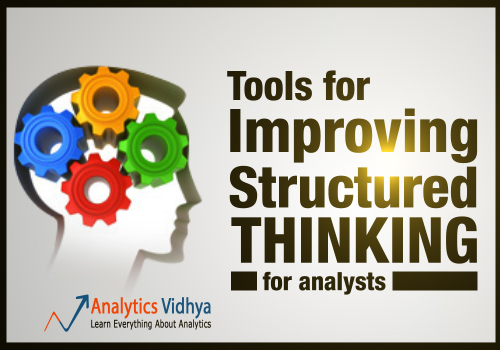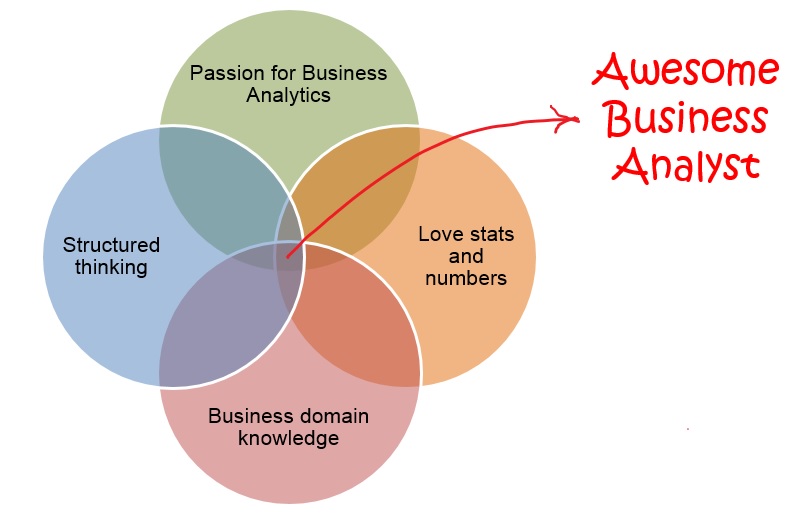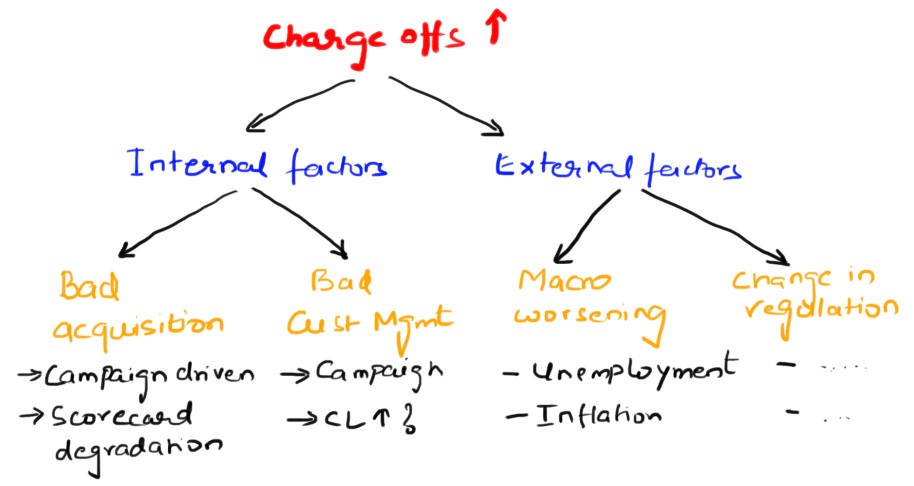There are 4 ingredients required to make a good an awesome business analyst:
- Passion for Business Analytics
- Structured thinking
- Love for statistics and numbers
- Business domain knowledge
We recently shared a few tips to train your mind on analytical thinking, the tactics and practices mentioned there improve your number crunching abilities and help you apply analytical thinking in day to day activities. Today, I am going to share a few tools and exercises I use for improving structured thinking.
[stextbox id = “section”] What is structured thinking?[/stextbox]
Structured thinking is a process of putting a framework to an unstructured problem. Having a structure not only helps an analyst understand the problem at a macro level, it also helps by identifying areas which require deeper understanding.
I had written an article on how structured thinking can help an analyst by reducing iterations and turn around time on projects. Today I’ll share some tools and practices which have helped me immensely in improving my structured thinking.
[stextbox id = “section”] Tools / Exercises for improving structured thinking:[/stextbox]
Following are some of the best practices I have used and applied for better structured thinking. I am sharing simple tools rather than the most sophisticated mind map software out there. Idea is to get you started on this habit of structured thinking. Once you are used to the process, you can explore advanced tools and software:
[stextbox id = “section”] 1. Layout a framework on paper before looking / creating your datasets:[/stextbox]
If there is only one takeaway you want to carry from this article, it should be this. As a practice, you should spend 1 – 2 hours of distraction free time (no emails, messages and phone calls!) just laying out the structure, possible hypothesis, story flow and a tentative business presentation. Here are a few pics of how I typically layout structure and story flow on paper (Business problem statement: Your Organization has observed increased credit risk in last few months. You need to analyze why this has happened and recommend next steps):
Here is how tentative story looks at this stage:
[stextbox id = “section”] 2. Use whiteboards for brainstorming (again before touching the data):[/stextbox]
Typically, I do a session / meeting with stakeholders laying out all possible hypothesis and action items after I have spent time laying out things on paper. Call all stakeholders, layout discussion for them, make sure they are engaged (and not busy on smartphones), note thoughts on whiteboard and capture all the thoughts in the framework we created on paper (before this brainstorming).
By end of this brainstorming, you should have a clear framework agreed and discussed with stakeholders.
[stextbox id = “section”] 3. Practice back of the envelope calculations (anywhere and everywhere):[/stextbox]
This is the tool I use the most. Any business you come across (e-Commerce websites to the laundry service you might be using), try and chalk out their business model in your mind. Some of the questions you can use to get yourself started are:
- What would be the revenues this business might be making?
- How many customers are they touching? Repeat customers? Loyalty scheme?
- What would be the cost structure?
- How has the business scaled up / down in last few months / years?
Perform all these calculations at back of your mind (and not on paper). Layout a structure in your mind first, then answer these questions and come up with answers. A side benefit of doing this is that you improve number crunching abilities as well.
[stextbox id = “section”] 4. Usage of a note / document to conduct meetings / discussions:[/stextbox]
This is one of the tricks one of my mentors used to enforce on his team. As a rule, he did not look at any powerpoint presentation. For doing any discussion with him, you were enforced to create a note explaining the problem and the solution, send it to him before hand and then he would get involved in discussion. I think (am not completely sure), a similar practice is followed in Amazon for all meetings with Jeff Bezos.
If you have not tried this before, give it a shot. You will realize the amount of clarity which comes by preparing a simple note!
These tools and tricks have served me well over years. Do let me know in case you have any trick / tools, which have helped you become more structured in your thinking.











Nice article. I sincerely follow the first point illustrated above. I prefer to call this process flow- the process that I tend to deal with the problem and determining its causes and possible solutions and recommendations.
I really liked the article would like to read more on these articles
Great, practical information.